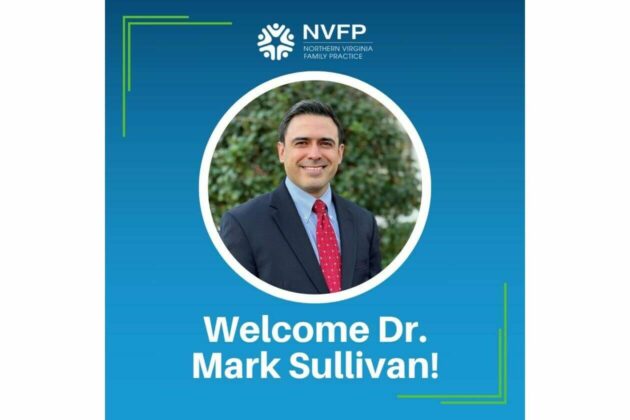 Peter’s Take is a weekly opinion column. The views and opinions expressed in this column are those of the author and do not necessarily reflect the views of ARLnow.com
Peter’s Take is a weekly opinion column. The views and opinions expressed in this column are those of the author and do not necessarily reflect the views of ARLnow.com
The July 8, 2019 flash flooding incident devastated Donaldson Run’s Tributary, exposing the flaws in Donaldson Run’s Tributary B restoration design. The County also is now on a path to use that same fundamentally flawed approach at Gulf Branch.
Killing a Stream to “Restore” a Stream
So-called “stream restorations” frequently kill streams by increasing water temperature and reducing oxygen. Cutting down trees and existing vegetation and using excavators to disturb the land in or near a streambed simply compound the problem and unleash invasive plants that also negatively impact stream ecology.
Studies show that the underlying cause for urban stream syndrome — the trigger for these “restoration” projects in the first place — is the growing volume and speed of stormwater runoff that results from the proliferation of impervious surfaces:
The ultimate mechanisms by which urbanization degrades streams are manifold but can usually be attributed to a small number of landscape-scale land-use practices for which alternative management approaches are available….
Our analyses reveal urban stormwater as a new class of environmental flow problem: one that requires reduction of a large excess volume of water to maintain riverine ecological integrity
County government disregards climate science
Instead of addressing the underlying problem, Arlington continues to spend millions on outdated, cookie-cutter “restoration” plans that produce counterproductive outcomes. The Donaldson Run Tributary A project is a prime example:
[A] large number of stream restoration projects focus primarily on physical channel characteristics. We show that this is not a wise investment if ecological recovery is the goal. Managers should critically diagnose the stressors impacting an impaired stream and invest resources first in repairing those problems most likely to limit restoration.
Since 2011, scientists and others have shown that the types of “restoration” projects conducted here in Arlington and elsewhere fail to achieve basic ecological and water quality goals.
Many streams are chosen for restoration simply because they are the “low hanging fruit.” This occurs when engineers–rather than ecologists, naturalists and conservation biologists–control a project. After the damage is done, those tasked with protecting natural resources are given the impossible task of trying to restore a semblance of life, natural
functionality, and ecological balance to a seriously degraded, post-construction landscape.
Streams will try to restore themselves (for example, trees falling into the water provide resistance and can slow water down). But to truly restore a stream, you must first reduce the inputs (the volume and speed of the runoff entering the stream). Otherwise, any benefits from so-called restoration efforts will be quickly nullified, as the Baltimore Sun reported:
[S]ome scientists say controlling erosion[‘s] … benefits don’t last if nothing else is done to reduce runoff from development before it pours into the stream.
“You can’t ask a stream to do everything an entire watershed should do,” said Margaret A. Palmer, a University of Maryland scientist who’s researched restoration ecology. She’s published studies finding “no consistent evidence” that restored streams reduce nitrogen, another key pollutant fouling the bay.
And while stabilizing stream channels may reduce erosion at first, she said, the benefit is likely to decrease over time.
In addition to the ecological impacts, misguided stream “restoration” efforts can also exacerbate flash flooding. By continuing to dump greater and greater volumes of water into the stream system — a system not designed to receive all that water so rapidly — County government ensures that erosion and other problems plaguing the streambed will continue. Widening the channel will do little to alter these dynamics.
Conclusion
County government is poised to repeat past mistakes by replicating them at Donaldson Run Tributary B and at Gulf Branch. Papering over development and land-use problems by merely adjusting stream channels to manage greater volumes of runoff won’t work. Both these “restoration” projects should be halted until a revised, ecologically sound design is adopted.
County government must accept current climate science and directly address the stormwater runoff problems before attempting expensive stream restoration projects. County government must redesign these projects to fit within a sustainable environmental footprint.
Working harder to preserve Arlington’s remaining mature tree canopy, reducing the quantity of impervious/built surfaces, and focusing greater attention on conservation of our natural resources are the keys to cost-effective stormwater management.
Recent Stories

Unlike our competitors, Well-Paid Maids doesn’t clean your home with harsh chemicals. Instead, we handpick cleaning products rated “safest” by the Environmental Working Group, the leading rating organization regarding product safety.
The reason is threefold.
First, using safe cleaning products ensures toxic chemicals won’t leak into waterways or harm wildlife if disposed of improperly.
Second, it’s better for you and your family. Fragrant chemicals in surface cleaners can expose you to a similar amount of pollutant particles as a busy city road, New Scientist reported.

Northern Virginia Family Practice (NVFP), known for its comprehensive concierge healthcare, is thrilled to introduce Mark Sullivan, MD as the newest member of its family medicine team.
Dr. Sullivan brings a wealth of experience in family medicine, underpinned by a passion for delivering personalized, patient-centered care. He has a distinguished background in managing various medical conditions, emphasizing preventive care, health education and chronic disease management. Dr. Sullivan is adept at employing the latest medical research and technologies to enhance patient outcomes.
Beyond his medical expertise, Dr. Sullivan is committed to the well-being of his community, demonstrating this through his active engagement in local health initiatives and educational programs. His approach to medicine is holistic, focusing on integrating physical, mental and emotional health and patient education to achieve optimal patient wellness.
Dr. Sullivan is now accepting new patients at their newly established Arlington office at 2445 Army Navy Drive, Arlington, VA, 22206. The office, known for its patient-friendly amenities and state-of-the-art medical facilities, continues to provide the exceptional, personalized care NVFP is known for in its newly upgraded Arlington location.
ACFCU’s Free Homebuying 101 Webinar: Steps to Getting Pre-Approved
Are you ready to jump into homeownership, or have you started considering it but don’t know where to start?
Financial preparation is key when thinking about purchasing your first home and the first step to getting pre-approved. Join ACFCU for
Sweeney Todd
A victim of a gross injustice that robbed him of his wife and child, Sweeney Todd sets about exacting a terrible revenge on society.







